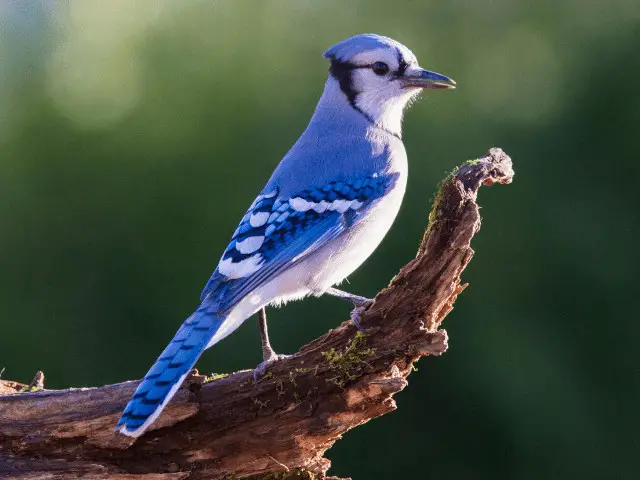Birding in your backyard is exciting because you can sit on your deck with a pair of binoculars in your hands, enjoying a cold or warm drink.
What else makes it exciting for you?
Or would you prefer to go birding in the forest? Well, in Colorado, you can do both. You can draw hundreds of species to your bird feeder or plan a trip to birding zones like Rocky Mountain National Park.
Let's look at a small number of the over 500 bird species in this state, identifying Colorado birds that love backyard feeders and the wild birds that eat even small fish.
Birds That Make Colorado A Birding Paradise
1. Red-winged Blackbird
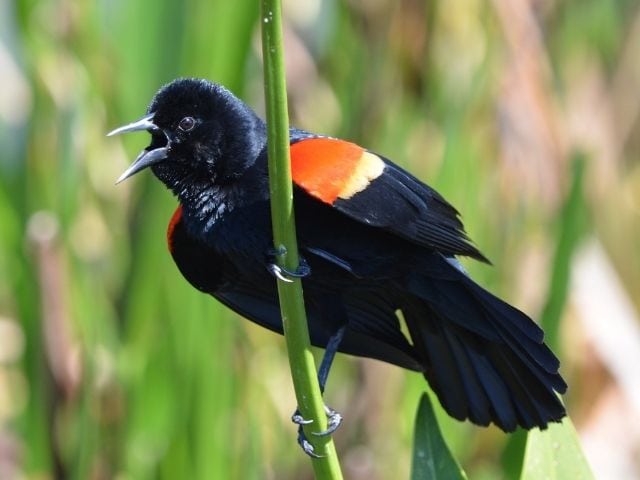
If you're in Colorado, look for this bird on telephone poles as you drive along or in your residential area. That's one of its best perches.
You'll love looking at the pictures you capture because this blackbird has stunning shoulder patches, a mix of red and yellow colors. The female blackbirds aren't as striking as they have brown streaks instead of black plumage.
Colorado has a resident population of this species, and the red-winged blackbird loves feeding on the ground or platform feeders.
2. American Robin
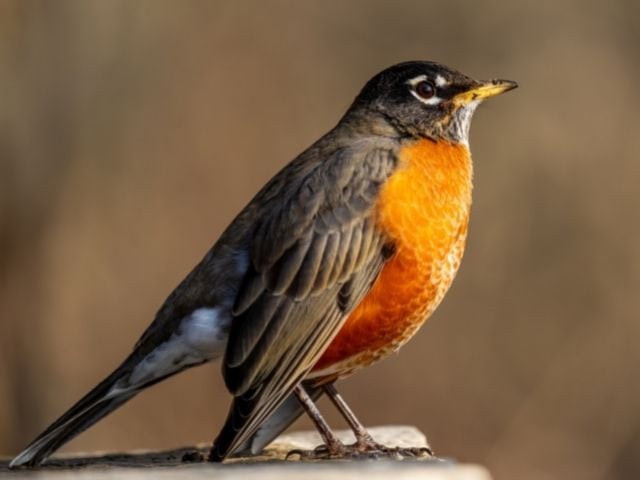
This resident Colorado bird loves woodlands, parks, open fields, mountains... almost every vegetation. It also frequents lawns hoping for a meal of earthworms.
You can make your backyard homely for the American robin by planting juniper, dogwood, and sumac so it can get berries. It gets at least three broods annually, but less than half of the nestlings survive. Its plumage is a combination of hues as the head is black, the bill is yellow, and the belly has a rusty color with a black-streaked throat.
A female has pale plumage that's similar in color to a male bird. This species grows to 11 inches long, so it's bigger than a European starling (7.9 to 9.1 inches long) or a western kingbird (7.9 to 9.4 inches long).
3. Broad-tailed Hummingbird
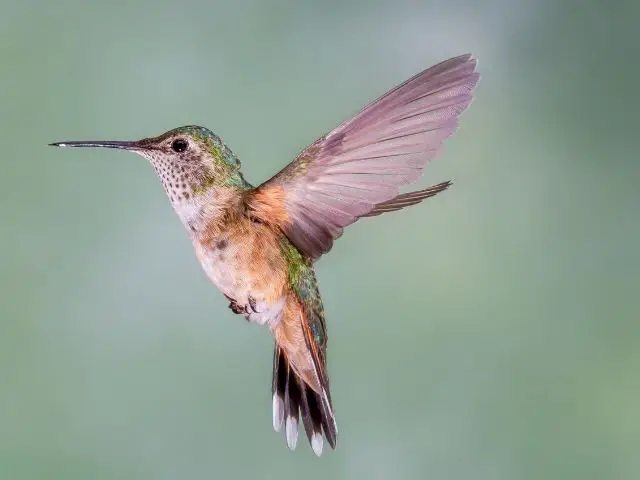
Like common grackles, a breeding population dots most states in the US. You'll see the broad-tailed hummingbird from May to August, and it loves meadows. But, breeding grounds are above 10,000 feet.
The first striking detail is its throat. A male's throat is a stunning rose-magenta hue contrasting green and white under and upper parts. A female isn't short of striking colors, as it has metallic green upper plumage, a pale throat, and grayish wings.
Have you come across some broad-tailed hummingbirds?
4. Mourning Dove
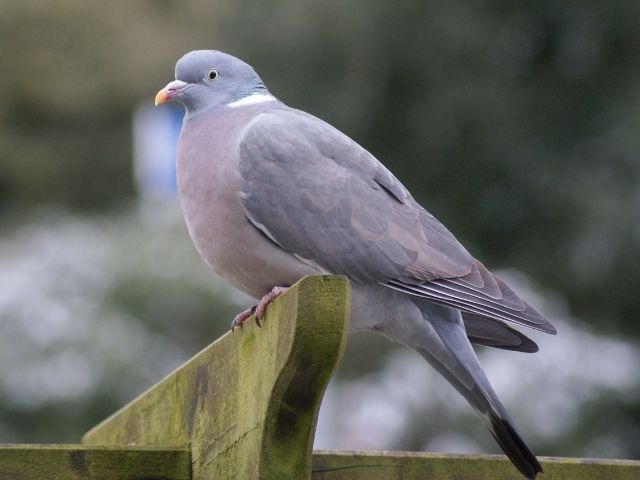
Other ID details to help you tell it apart from other Colorado birds are its brownish plumage and black spot pattern on its wings. It has a resident population in Colorado.
Unlike others that feed on trees, a mourning dove forages on the ground, sometimes gathering fallen seeds under a bird feeder. Once it swallows enough seeds, it perches on a tree to digest them. Its diet is mainly seeds, though it looks for grass and ragweeds too. Where can you spot this species?
It forages in grasslands, open fields, and the edge of woodlands. You may also see it on telephone wires. If you want to attract more of these doves to your backyard, scatter millet, black oil sunflower seeds, or cracked corn on the ground. You can also use a platform feeder.
5. Northern Flicker
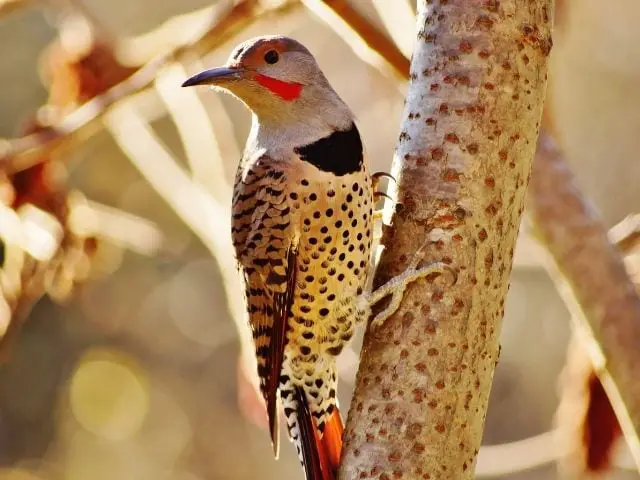
This stunning woodpecker is one of the many you'll see in Colorado. Like the mourning dove, this one also loves foraging, looking for carpenter ants and beetles. That's why you'll see it in woodlands or forest edges. It breeds in North America and migrates south in the other months. But, there's a resident population in Colorado and other states.
You'll know it's a northern flicker because of its beautiful red nape and grayish plumage with brown streaks. It also has a white rump in flight. Some birds have a yellow shaft on the tail, while others have a red one.
6. Dark-eyed Junco
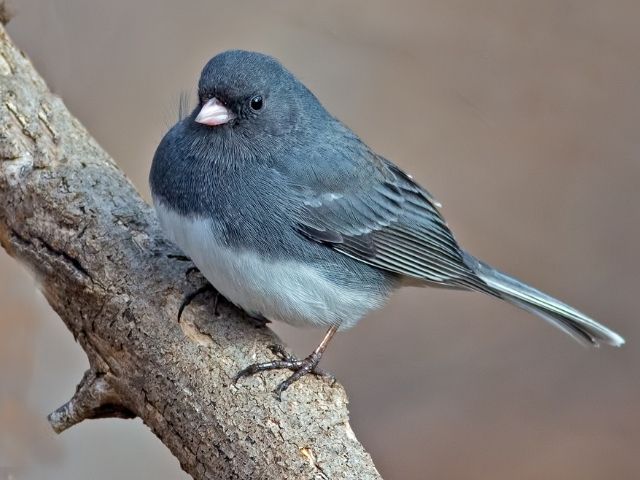
A bird in the west has a black head and throat and a brownish body, whereas one residing in the eastern states has grayish plumage with a white belly.
A dark eyed junco loves woodlands, and it prefers living on the forest floor instead of perching on trees. This sparrow is one of the most common wild birds in the US.
7. House Finch

You can spot it in Colorado in summer and winter, but it's more common in winter. It was more popular in the western states, but you can now see it in the eastern states. The story of these finches' introduction to the eastern states is quite interesting.
Want to know more? We'll tell you more.
You see, in 1940, pet stores were stocking these finches and selling them illegally. When they found out that the Feds were planning a crackdown, they let the birds loose, and they became the first population of house finches in Long Island, New York.
A male finch has a red-colored head and throat, all the way to its belly, while a female finch has brown-streaked plumage.
Finches inhabit farms, forest edges, and parks. They live in flocks and are so noisy that you'd not want them near your cabin. Favorite foods include seeds, strawberries, cactus, and blackberries.
8. Black-billed Magpie
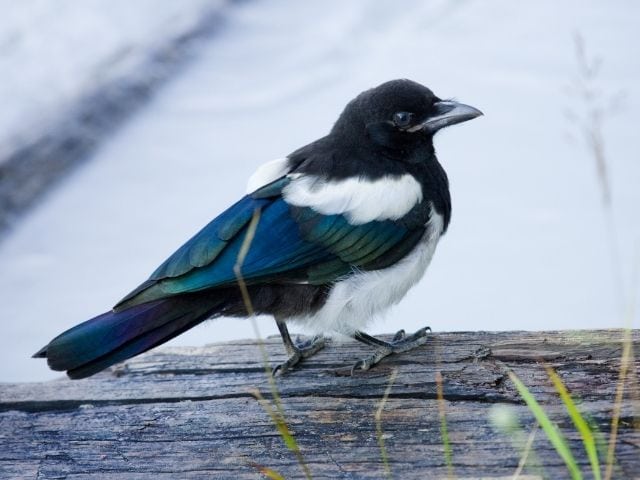
It's larger than a blue jay as it's between 17.7 and 23.6 inches long. The black-billed magpie's plumage combines black and white. You can also ID it by its long tail.
Mostly, this Colorado bird eats squirrels, voles, nestlings, beetles, and grasshoppers. But that's not all; when black-billed magpies come to your bird feeder, they won't mind finding some millet, black sunflower seeds, or peanuts.
9. Black-eyed Chickadee
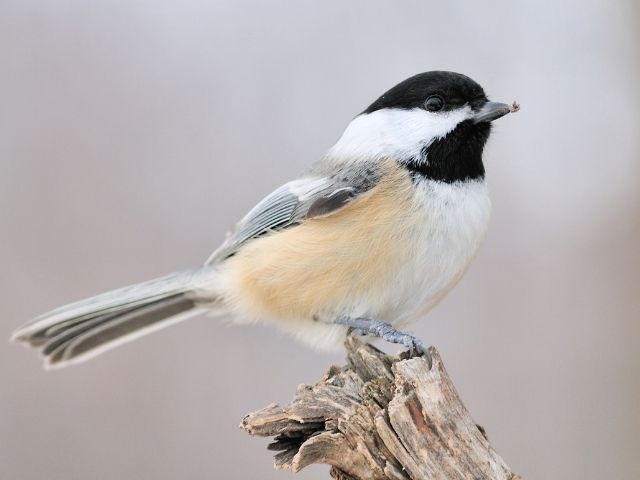
A round head, black cap, white cheeks, and gray upperparts Identify a black-eyed chickadee. You're likely to see one hanging around your backyard feeder waiting for suet, sunflower seeds, or some peanut butter.
It makes friends fast, sometimes coming so close that you can feed it some seeds from your hand. If you want it to stay longer, install a nest box stuffed with wood shavings to give it a platform on which to nest. In the wild, it hunts insects like spiders and also snacks on berries.
10. Mountain Chickadee

It's a small Colorado bird with a gray body, a white head, plus black stripes from the eyes to the nape. It resides in the mountains and prefers evergreen forests where it can catch insects like spiders.
The mountain chickadee also comes to suet feeders for sunflower seeds and mealworms. It's not a common species as it inhabits a few western states only, from California, Nevada, Utah, Arizona to Colorado.
11. Downy Woodpecker

It's a common backyard bird because that's where the downy gets its black oil sunflower seeds, peanuts, and millet.
You may confuse it with a hairy woodpecker, but a downy woodpecker is smaller with a short bill, white underbelly, plus a black and white back.
Fun Fact: Read more about this species (habitat, food, and characteristics) by researching Ohio woodpeckers!
12. White-crowned Sparrow

A mature white crowned sparrow has a black and white stripe pattern on its head, but a juvenile has brown stripes. A mature one has gray upperparts and a small bill.
To see it, explore forest edges or fields with weeds. It also forages in the grass, looking for seeds. A white-crowned sparrow is a small bird that's between 5.9 and 6.3 inches long.
13. Blue Jay

You'll see this songbird often across the US, but blue jays are also migratory birds from the northwestern region. It has a blue and black back contrasting white underparts.
It gathers acorns in forests and also eats insects and grains. Sometimes, nestlings are also on the menu. You can attract it to your yard by installing a bird bath and tray feeders with seeds and grains.
14. Song Sparrow
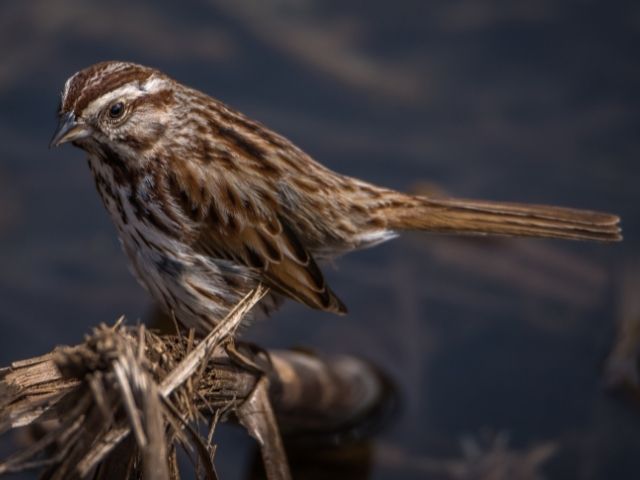
It's smaller than a white-crowned sparrow or a dark-eyed junco, and its plumage is also different. A song sparrow has brown streaks all over without any other distinct hue to tell it apart from other species.
15. Black-capped Chickadee
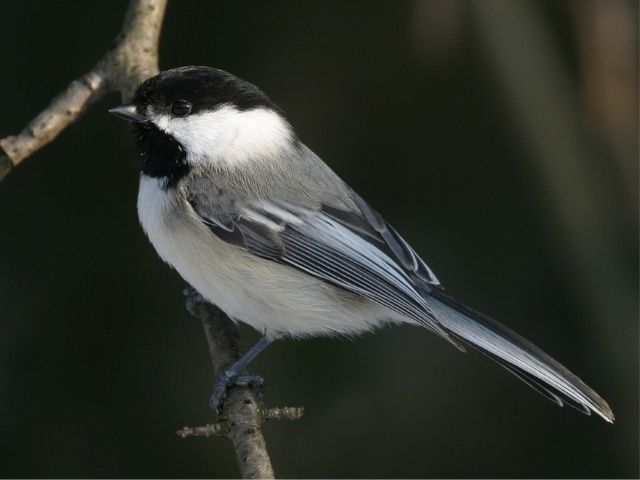
This small, beautiful backyard bird is about 4.7 to 5.9 inches long. Its head is big and round, and it's colored black from the crown to the eyes. The black-capped chickadee has a tiny body with a pale underbelly and a long grayish tail.
The black-capped chickadee lives in forests, open woodlands, and parks.
16. White-breasted Nuthatch
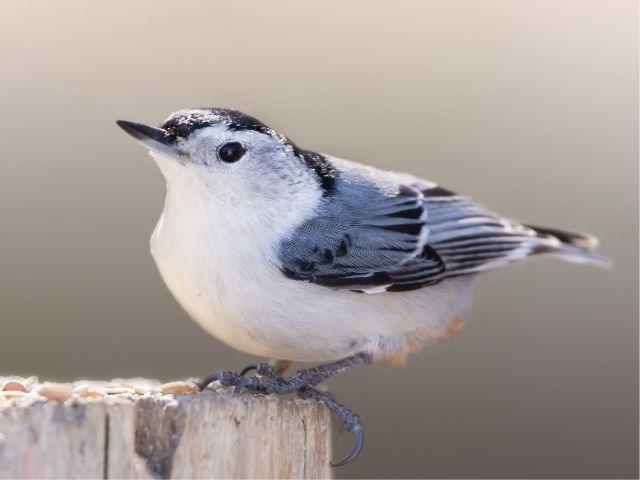
To attract it to our feeder, you only need some sunflower seeds or peanuts. It feeds from suet and tube feeders.
The white breasted nuthatch is a small bird with a grayish-blue back and a white underbelly. It has a white face and a black cap.
In the wild, you're to visit deciduous forests, coniferous forests, or the edges of woodlands to find it searching for acorns or hawthorns. You'll have a memorable experience if you catch it cracking nuts or acorns.
17. House Sparrow
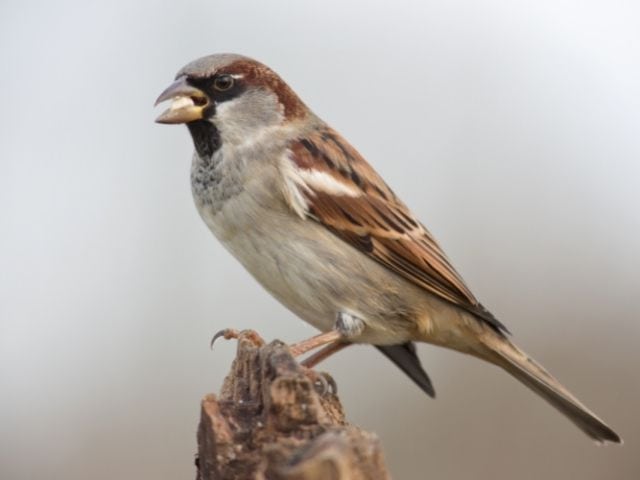
It's also called Passer domesticus, and you'll see it around houses and buildings. You might have some in your backyard right now.
To tell there is one on your property, look for a bird with rusty brown and black stripes on the back and a pale underbelly. The male has a small black bib that becomes larger during the breeding season.
18. Black-throated Blue Warbler
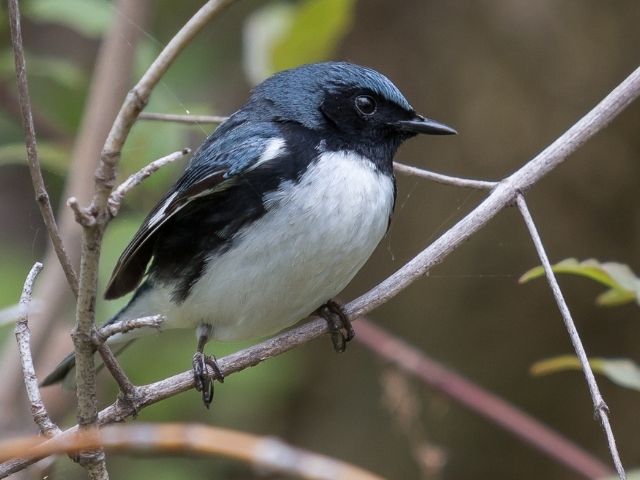
It doesn't have a resident range in Colorado, and most of the sightings in this state are on the eastern side since it's a migrant species that can travel medium to long distances. The black-throated blue warbler has a blue head and upper parts and white underparts.
Its face and throat are black. But, that's the male bird as the female has grayish olive plumage and a white patch on its wings. It's not a big species as it's between 4.3 and 5.1 inches long.
19. Rufous Hummingbird
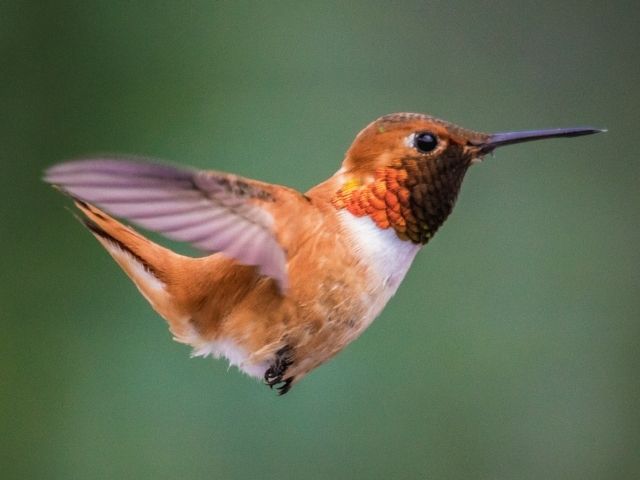
It's an aggressive bird that can defend even larger hummingbirds. The most prominent feature on its small body is a long, sharp bill. Its wings and tail are short, and the male has an orange hue with a pale underbelly. A female's plumage is a combination of black and red.
Fun Fact: Did you know this species is known as the "feistiest hummingbird in North America"? Learn about it by reading our article, "6 Michigan Hummingbirds"!
20. White-tailed Ptarmigan
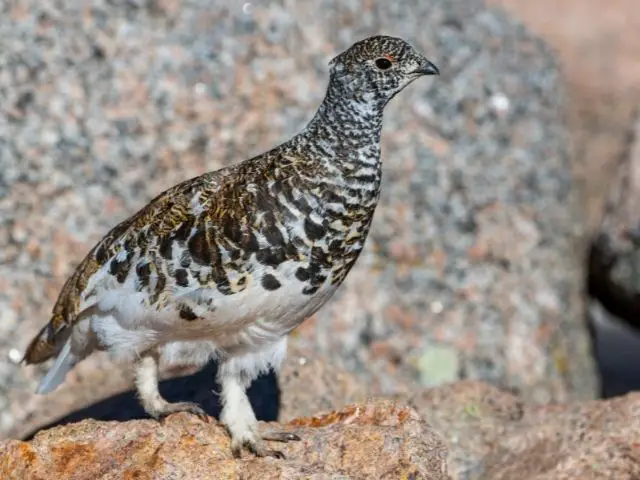
Like the common grackle, this bird has only a breeding population, and it's in a small part of Colorado. You'll have to explore the alpine tundra during the breeding season to see them in their nests. Their bodies adapt to this elevation because of feathered feet and thick plumage.
They aren't very active in winter, instead opting to roost in snowbanks. The white-tailed ptarmigan perches in willow and alder shrubs. It eats stems, leaves, flowers, and fruits. When it's warmer, this bird hunts insects and forages on the ground.
The ptarmigan is a large bird that grows to about 12.2 inches long. The nonbreeding adults are as white as snow with black eyes. On the other hand, the breeding plumage on males is mottled gray backs and a white underbelly, while the females have brown bars.
21. Red-tailed Hawk

This hawk is almost everywhere you turn when driving along major highways. If you don't see it on telephone poles, you'll see it flying over open fields, looking for rabbits below. The red-tailed hawk has pale underparts and dark brown upperparts. Its tail is reddish.
Now you know there's a variety to make every bird watcher long for a trip to Colorado.
Frequently Asked Questions (FAQs)
Are There Cardinal Birds In Colorado?
Yes, there are cardinals in some parts of Colorado; however, they inhabit a section close to this state's border with Kansas. They aren't plentiful because this state doesn't have many dense shrubs or regrowing forests.
Are Chickadees In Colorado?
Yes, this state has several types of chickadees, such as mountain chickadees and black-capped chickadees.
What's The Difference Between A Nuthatch And A Chickadee?
The first thing you'll notice is the difference in their tails and bill. Chickadees have shorter tails, but nuthatches have longer bills.
Learn more about Nuthatches in this video:
Final Thoughts
Colorado has over 500 species that include native birds and migratory ones. How many have you identified so far? Don't worry; you'll ID all of them when you combine birding on your property with visits to parks. There are woodpeckers, chickadees, kingbirds, and so many other species.
Birders in Colorado have over ten national forests, over 40 state parks, several grasslands, and wildlife refuges. Birding there is an adventure.

